Flat lay photography is all the rage these days, and for good reason: it’s a great way to show off your style and creativity. But if you’re new to the genre, it can be tough to know where to start.
That’s why we’ve put together this list of seven flat lay photography clothing ideas that are perfect for any photographer looking to add a touch of style to their shots. So whether you’re just getting started or you’re looking for some fresh inspiration, be sure to check out our list below!
We think of flat lay photography as shooting overhead. And overhead means shooting from above with the camera either pointing at an angle or straight down.
But flat lay isn’t just shooting from above. It’s also shooting straight down. That means you can’t technically call a photo a flat lay if it’s even at a slight angle.
When creating flat lays, you can just stand on a step ladder and take photos from above. But if you need to take many pictures, we recommend you use a tripod that can point your camera straight down.
What’s the secret to taking excellent flat lays? Make sure your camera is pointed downward at a 90° angle. You can either do that by simply eyeballing the perspective of your camera or by using your tripod’s spirit level. This kind of shooting technique is especially suitable for product photography, as well.
Now that we have a general idea of flat lays—let’s dive into more specific tips for clothing!
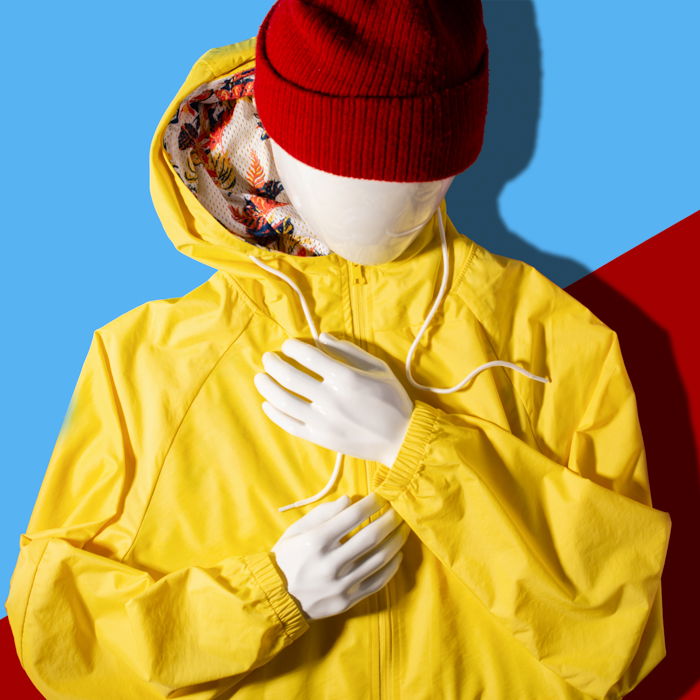
This tip may seem too obvious to some, but many people doing clothing flat lay often forget to iron clothes. So before you start your shoot, you better plug in your iron or steamer and remove those wrinkles!
Even after ironing your clothes, the garments could still end up looking wrinkly as you style them. It’s crucial to iron and re-iron clothes even when you’re in the middle of styling them.
So feel free to iron the items even as you decorate your flat lay set. Thankfully, it’s not going to be too challenging since you’re photographing the clothes on a flat surface anyway.
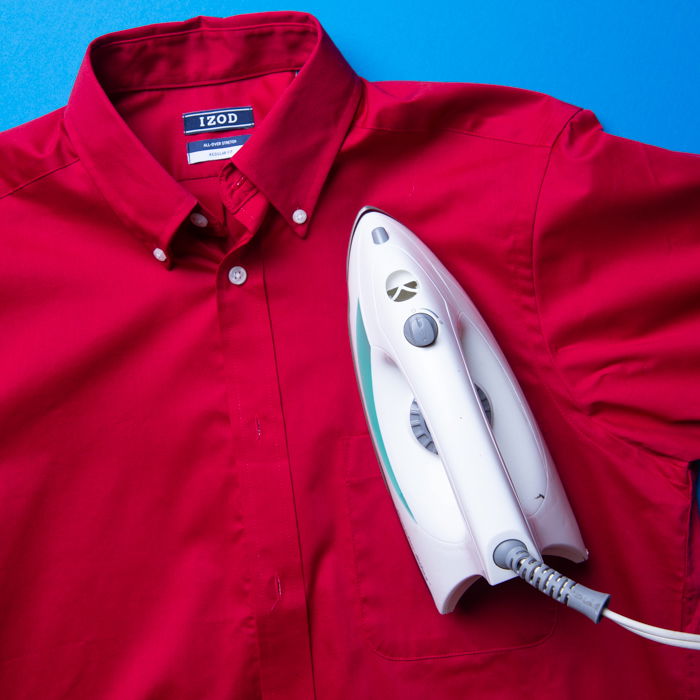
So what happens if you don’t iron your garments thoroughly? Well, let’s say you’ll find it challenging to edit the images of clothes.
In other situations, using the Patch and Spot Healing brush tools in Photoshop does a great job of removing minor blemishes. But when it comes to textured items such as garments, fixing flaws will result in a messy situation. Editing wrinkles out of garments results in blotches that look unnatural.
So if you want to avoid reshooting your flat lay photos of clothes, do your best to keep everything wrinkle-free!
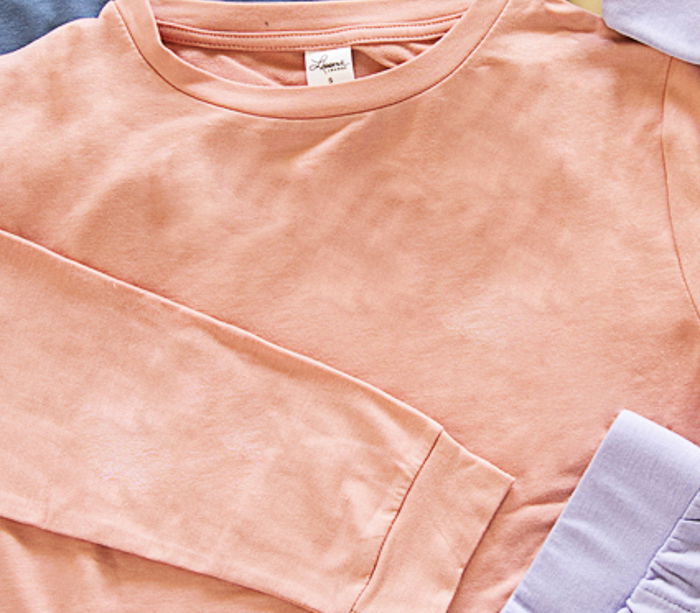
Blotches on a sweaer after editing the image.
Okay, we know we said to keep everything wrinkle-free in the last section, and we mean it! But that doesn’t mean you should force all clothing to look uniformly ironed. There are some exceptions.
When doing a flat lay photo session of clothing, you’ll notice that different materials look and feel different from each other. Wool has distinct characteristics compared to cotton or satin. And you’ll see that in your images right away.
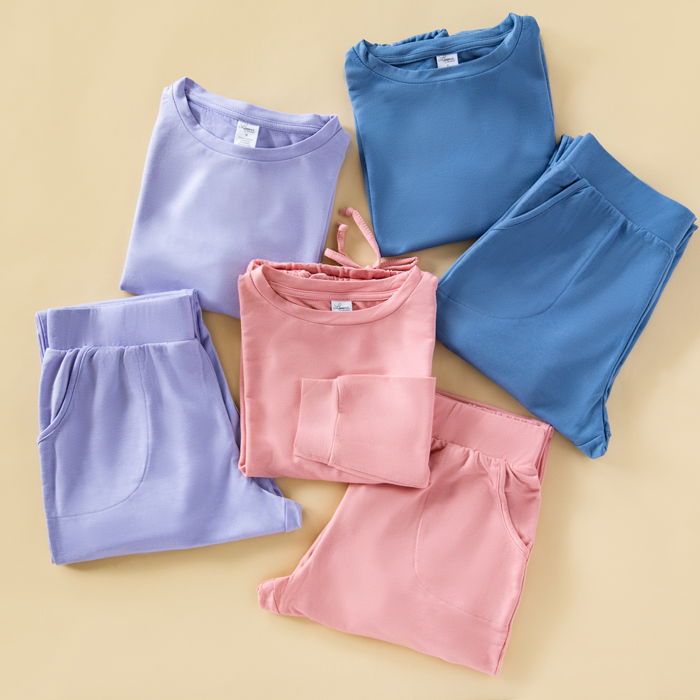
Look at the cotton-linen scarf below. Do you notice that it looks a bit wavy, especially at the edges? The cotton-linen used for the scarf is so thin that it’s virtually impossible to iron out the wrinkles.
But that’s a good thing because it’s the natural state of the scarf. If you ironed this garment to look smooth, you’re not showing what the product looks like in real life. Allow the distinct characteristics of the clothing’s material to stand out.
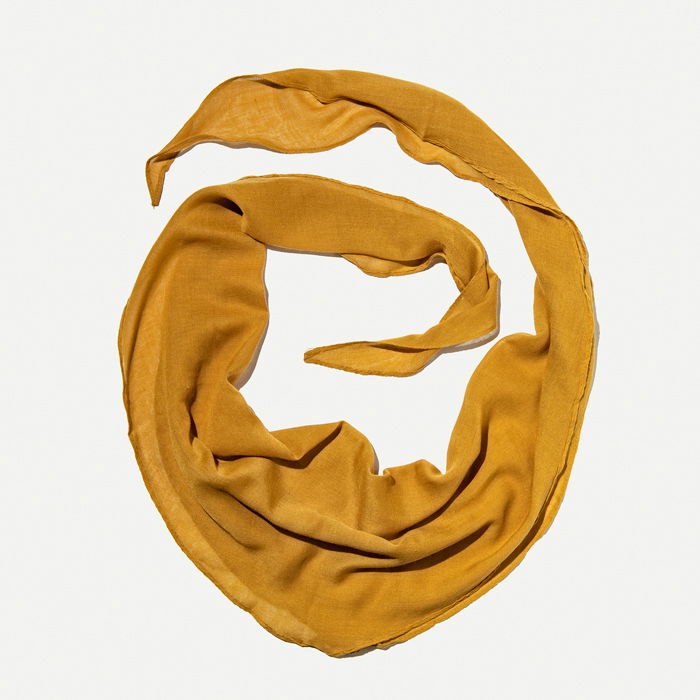
When it comes to flat lay photography involving fashion items, you must correctly capture the clothing’s colors. You don’t want to receive complaints from customers saying the color of the actual product is different from the image.
So how do you ensure the color of the product in your flat lay is accurate? You adjust your white balance with the help of a grey card or color checker.
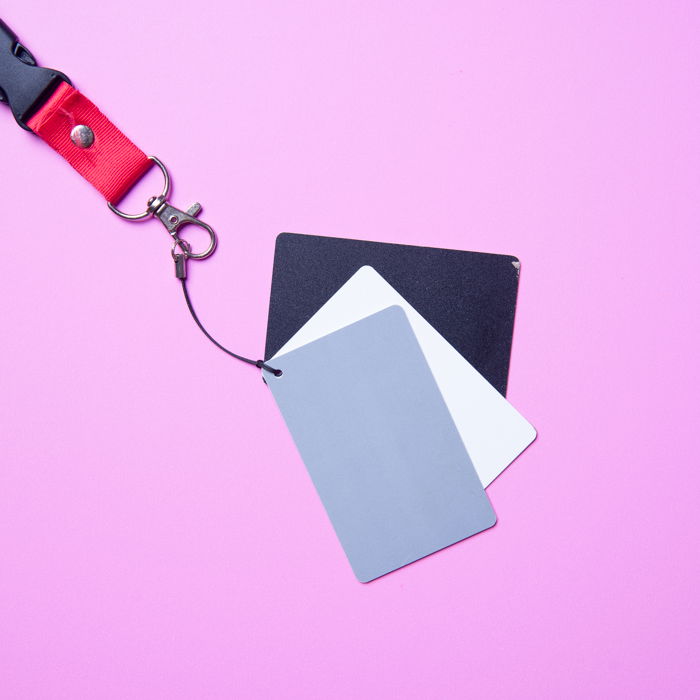
An example grey card for photography, with white and black cards
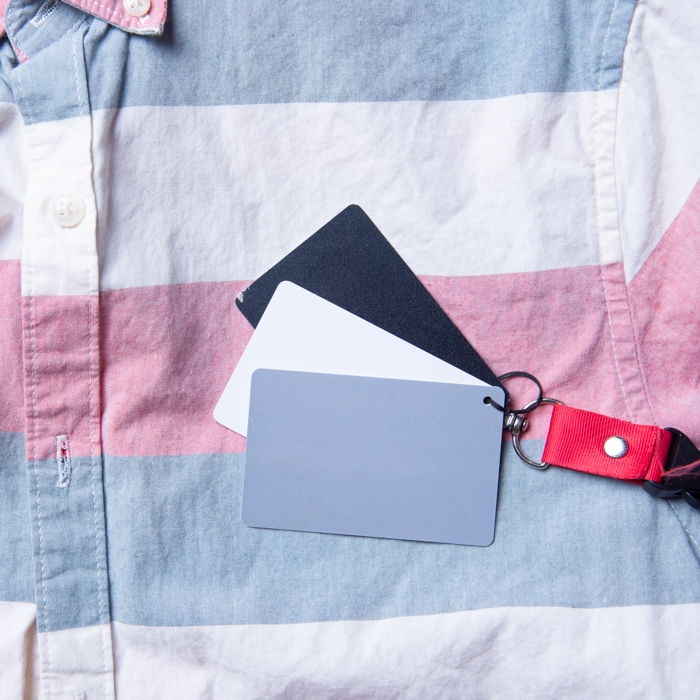
Using a grey card to calibrate white balance in editing software
A lot of people think that styling clothing is easy. But the truth is that it’s one of the most challenging skills to learn in product photography.
First, clothes are enormous. Even the small-sized shirts are at least about two feet long. Of course, the more space they occupy when they lay flat, the more challenging they will be to style. Even when you’re only working with two items, you will still need about four square feet of space, so everything fits in.
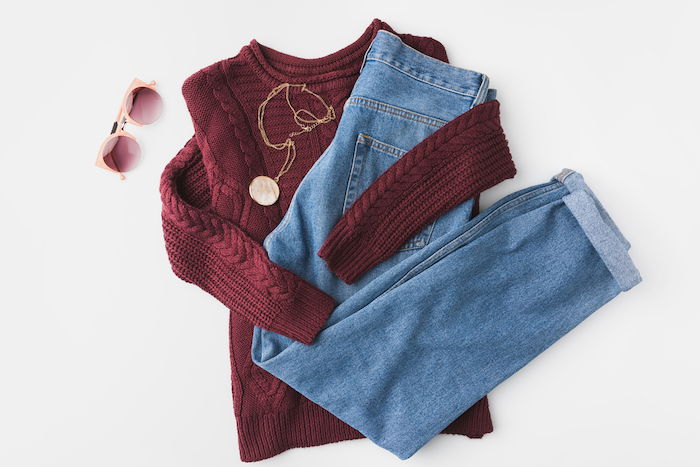
Second, some types of clothing can be challenging to recognise when you fold them the wrong way. For instance, there is no way for people to know what a coat might look like when folded.
So how do you style clothes properly? The secret is to arrange them in such a way that you can show their most crucial details. So if a T-shirt has a print, make sure to display it prominently in your product photography.
And if you have to fold items for a flat lay photo session, make sure you do so in a way that people would still know what they are. So don’t fold long-sleeved shirts the way you would regular t-shirts. Show people that the item has long sleeves. It’s essential to arrange clothes a certain way so people would recognise them easily.
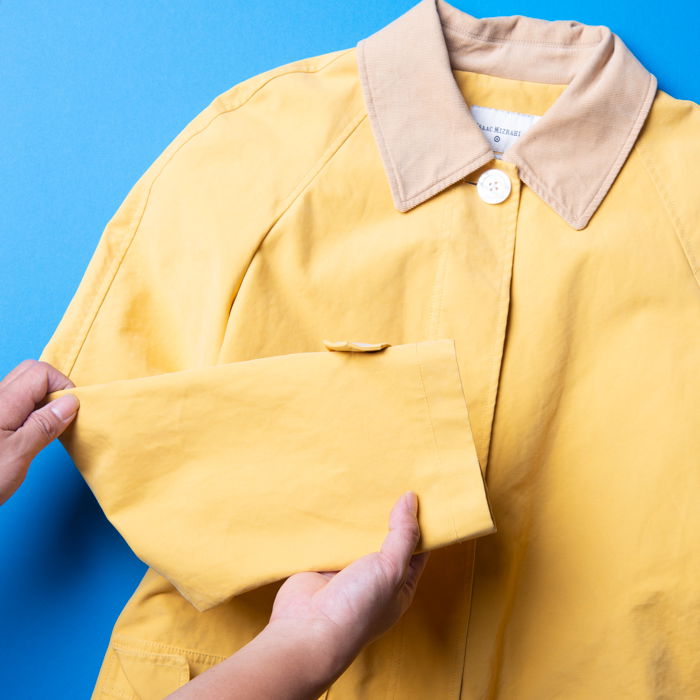
When doing a flat lay shot of clothes, it can be quite challenging to show the three-dimensionality of the items. Since they’re lying flat on the surface, the clothing tends to end up looking like paper cutouts.
To make sure your clothes would still pop from the background, light the items from a lower angle. Doing so allows you to add some shadows to the natural wrinkles of the products. These shadows add dimension to your image and bring out the textures of the garments.
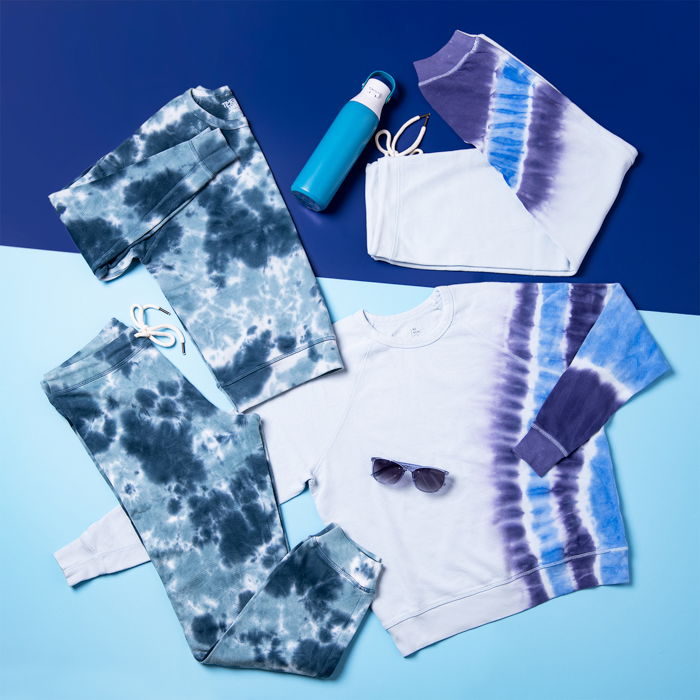
In most cases, lighting a flat lay at a 45° angle is enough. If you go any lower, you typically end up with long shadows that can be too distracting. And if you go any higher, you risk making your shot appear flat due to the lack of shadows.
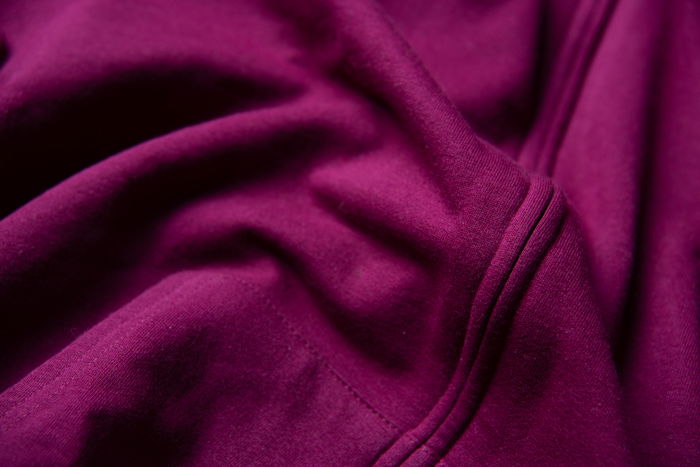
Detail of shadows adding dimension to clothing
You can use just about any lens when doing flat lay shots of clothes. You can even freely choose between prime lenses and zoom lenses.
Nevertheless, you must refrain from choosing a focal length lower than 50mm for flat lay photography. Why? Because anything lower than 50mm would technically be considered a wide-angle lens.
One of the features of a wide-angle is to distort the elements in the frame so it can fit more in a photo. Now, that may be appealing if you’re a landscape photographer, but not when you’re doing flat lay shots.
When there’s too much distortion, your flat lay images will appear off. In effect, you’ll end up showing people a photo of a product that looks very different in real life. So stick to focal lengths 50mm and above to make sure that doesn’t happen.
In our experience, we often choose between 50mm and 85mm prime lenses. Why? Well, a 50mm lets you shoot flat lay without having to step on a ladder to get all the elements in the frame. Meanwhile, an 85mm offers the best distortion-free results, even if it means you have to get the camera higher to take pictures.
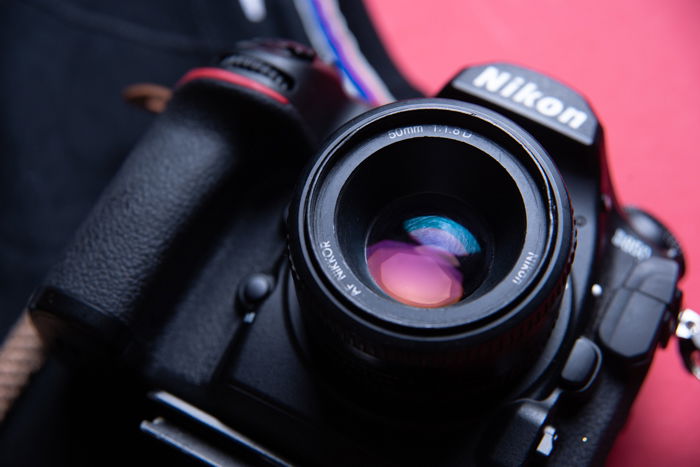
There are no fixed camera settings when it comes to flat lay photography. But we will give you a few guidelines to help you achieve the best results when shooting clothes.
For ISO, the best setting is between 100 and 200. Why? Because these values produce the least amount of image noise. If you use high ISO, you’ll end up with grainy results that will affect the quality of your images.
For aperture, it’s best to use anything between f/11 to f/16. These values have a deep depth of field which means they produce the sharpest results.
Now you’re probably asking, why not choose the maximum aperture of f/22 or f/32? The simple answer is that using the maximum aperture causes your images to become blurry. If you use such small openings, you could end up with lens aberration, which stops you from getting sharp results.
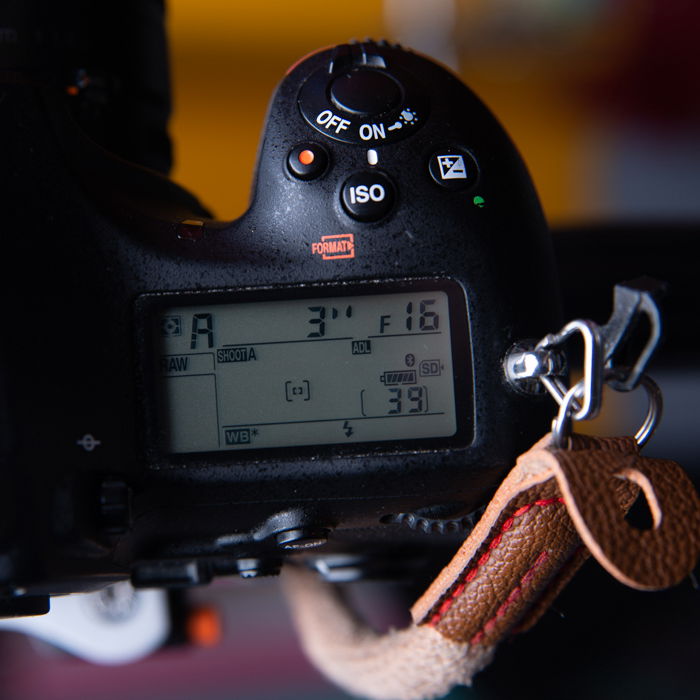
When it comes to shutter speed, it all depends on the ISO and aperture you choose. To make it easier for you, feel free to select Aperture Priority as your default exposure mode. Doing so allows your camera to automatically select the correct shutter speed based on your selected ISO and aperture settings.
If you’re working in low light conditions, your camera might select a long shutter speed that could last a few seconds. But you don’t have to worry about motion blur since your camera is on a tripod anyway.
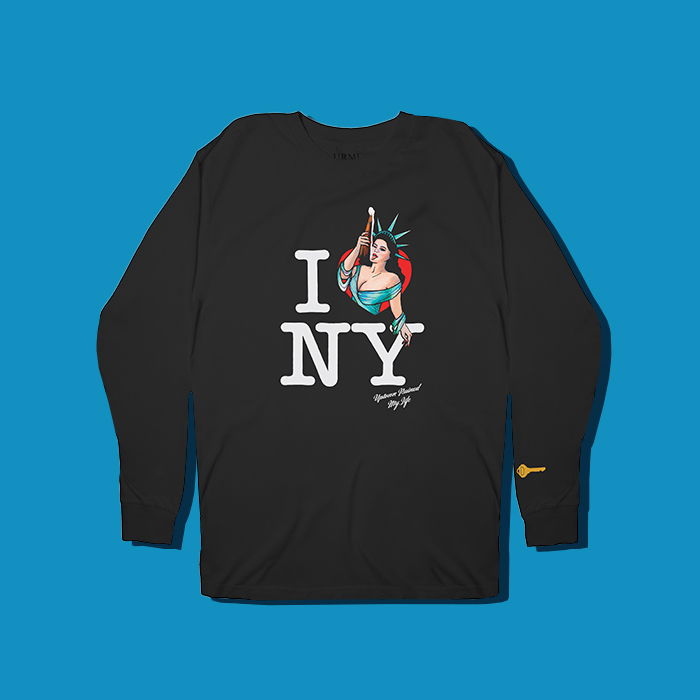
Doing flat lay photography with clothing is surprisingly difficult to do for the uninitiated. But the tips we offered will allow you to photograph fashion items like a professional. The secret is to use what you learned immediately to help you develop healthy habits. And once you get used to photographing clothes, you’ll see that it can be easy now that you know what you’re doing.
Check out our Products in Focus e-book if you want to create simple but dynamic photos that sell!